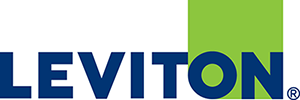EXCERPT:
Over the past 14 years, Power over Ethernet (PoE) has steadily increased its footprint in enterprise applications. Driven by market demand for a greater range of devices and smart building initiatives, as well as new IEEE standards supporting higher power levels, PoE is expected to continue its upward growth trajectory in the coming decade. PoE enabled port and device sales are projected to grow from $45 million in 2015 to $1 billion by 2021, and the overall PoE market is expected to reach $3.7 billion by 2025.
Historically, PoE adoption rates have increased in parallel with the adoption of new PoE standards. When the original PoE standard, designated Type 1 PoE, emerged in 2003 with the publication of IEEE 802.3af, only a handful of applications were projected for the technology, including thin clients and remote access control devices. Type 1 PoE enabled 15.4 watts of DC power to be sent from power sourcing equipment over two of the four twisted pairs of Cat 3 cable or higher. This early form of PoE supported 10BASE-T and 100BASE-T, delivering 12.95 watts through 350mA of current to a powered device for Ethernet speeds up to 100Mb/s.
In 2009, IEEE introduced 802.3at, also known as Type 2 PoE or the PoE+ standard. The 802.3at standard doubled the power that could be sent via PoE — up to 30 watts — and recommended Cat 5e cabling as the minimum cable grade, while supporting 1000BASE-T over Cat 5e or 6. With the ratification of 802.3at, 25.5 watts and 600mA of current could be delivered to devices over two of the four pairs, with backwards compatibility to 15.4 watt PoE. With the new standard came new applications; primarily VoIP phones and IP security cameras supported by network cable connectivity and power


